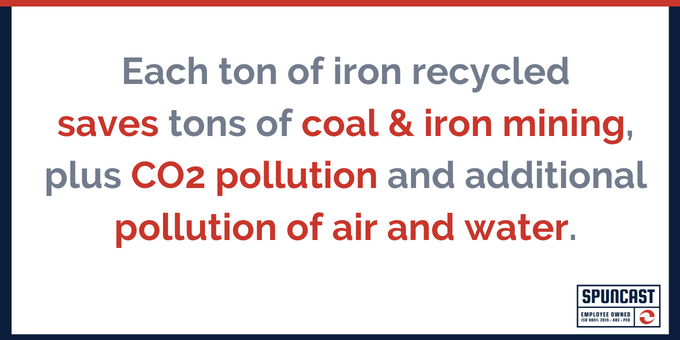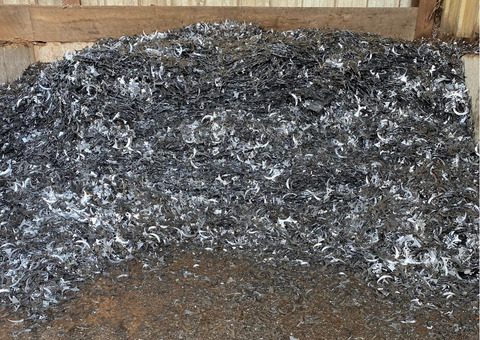There are multiple benefits to centrifugal casting, but one that doesn’t get talked about enough is the lower environmental impact of centrifugal casting.
As long ago as 1997, a study by the global business school INSEAD concluded that recycling-based casting is the “wave of the (immediate) future” because of its intelligent use of existing material.
Recycling is a big part of the story, but it’s not the whole story. By driving efficiency and quality, casting in general and centrifugal casting in particular can generate positive environmental impacts.
Let’s look at the sources of those impacts in more detail.
100% Recyclability: As green as it gets
A 2011 study of sand cast products found an inverse relationship between use of recycled material in casting and environmental impact – the more recycled material, the lower the impact.
In addition, the INSEAD study cited earlier found that, “Each ton of iron recycled saves 12.5 tons of … coal and iron mining … It also eliminates at least a ton of CO2 pollution and significant additional pollution of air and water.”
At Spuncast, the environmental story begins with recycling.
Recover and reuse — indefinitely
Spuncast prefers to use 100% recycled metal in its castings.
Recycled metal has another name: scrap.
Now if you’re thinking, “I don’t want to use something made out of scrap metal,” it depends.
Not all scrap is created equal. Some is literally junk.
However, Spuncast uses high-quality steel from fully vetted dealers that can and should be melted and reused indefinitely.
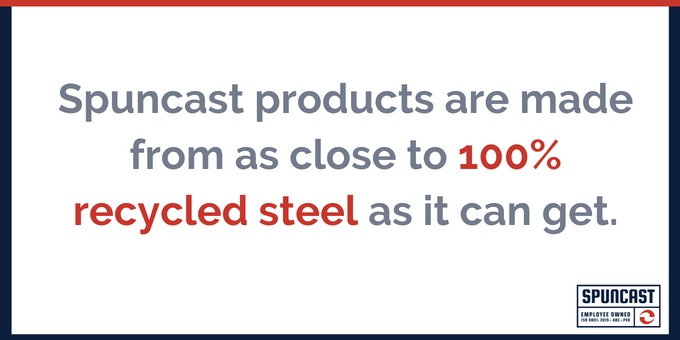
In addition, Spuncast recovers and recycles almost every last scrap of metal from its manufacturing process, so its products are made from as close to 100% recycled steel as it can get.
By comparison, the Massachusetts Institute of Technology estimates the industry as a whole uses only around 85% recycled stock for casting.
Plastics have a finite lifespan, but “you can reuse steel infinitely – 100% of it can be remelted,” says Greg Whitman, Spuncast’s sales and engineering VP.
Creating circular reuse patterns
Because steel can be remelted and reused indefinitely, it lends itself to some highly circular reuse patterns.
“One of the really cool things we make is a hydraulic cylinder for a metal shear used by the steel scrap industry,” Whitman says. “It’s basically a big pair of scissors that’s pushed by a hydraulic cylinder.”
Spuncast makes the hydraulic cylinder, but its customer makes the shear. The customer sells the shear to the scrap dealer, who cuts up all the scrap that we then buy back and turn into that hydraulic cylinder.
“It’s just a big circle,” he adds.
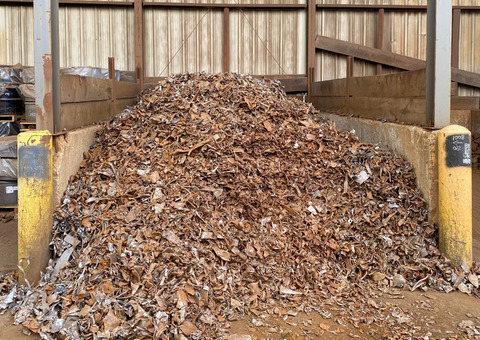
Lower embodied energy … lower environmental impact?
According to Casting Source magazine, “because castings are the shortest path from raw materials to a finished product … a decrease in embodied energy [through the manufacturing process] will also have an associated decrease in greenhouse gas emissions over the full life cycle of the product.”
Cool. But what is “embodied energy” – and what’s meant by “the full life cycle of the product”?
Embodied energy is the total energy used to make a product. It’s the energy “embodied” in the manufacturing process.
A product’s life cycle starts with raw material and encompasses manufacturing, use, and end-of-life. (End-of-life includes what happens when the product can’t be used anymore — is it trashed or recycled?)
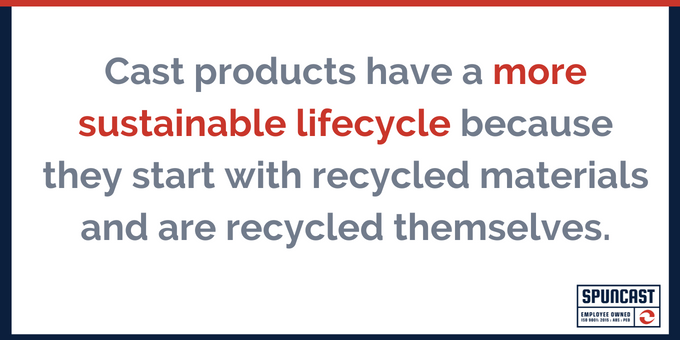
Cast products would seem to have a long, more sustainable life cycle compared to other manufactured products because they start with recycled materials and are recycled themselves, but there’s surprisingly little supporting research outside of this paper on thin-walled castings.
There’s a case to be made for cast products generating environmental benefits through lower embodied energy over a product’s life cycle. We’re just waiting for the research to make it.
Other environmental impacts
Recycling is at the heart of Spuncast’s commitment to the environment, but there are other positive environmental impacts, including enhanced durability and less overproduction.
Enhanced durability: Long life means less replacement
The longer something lasts, the less frequently it needs to be replaced – creating a cost benefit and a significant environmental impact as well.
There could be direct environmental impacts from the replacement process, in the case of a part preventing release of hazardous material, or indirect impacts resulting from things like:
- Transportation
- Recovery
- Installation
- Environmental remediation
Either way, a centrifugally cast product delivers maximum durability, with all the benefits that entails.
Deepwater Horizon: Failed parts = environmental damage
Now, think about what can happen if a part fails.
After the offshore oil-drilling rig Deepwater Horizon had a disastrous blowout in April 2010, post-accident assessments centered around a cast hydraulic coupling that was helping with blowout prevention.
Whether through manufacturing defects or corrosion over time, the part failed.
The task then became designing a new mechanism to provide a fail-safe level of blowout protection.
Though the design process (detailed in this article from MIT) went stunningly fast, by the time the well was capped in July using Spuncast parts, more than 210 million gallons of oil had spilled into the Gulf of Mexico.
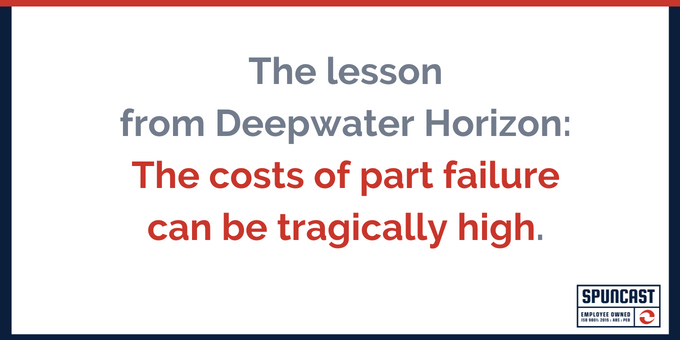
Less overproduction: It costs more to make more
There’s also a significant environmental cost to making too much of a product.
Think about all of the environmental impacts involved in overproduction (a cardinal sin in lean manufacturing, according to an analysis by Eastern Kentucky University):
- The extraction, transportation, and processing of raw materials
- The transportation and manufacturing of finished goods
- The transportation of the finished goods to a warehouse or secondary manufacturer
- The necessity of having and equipping a facility to handle overproduction
- The waste of having a warehoused product degrade over time
That’s a lot – and it can be avoided by using cast-metal products that are manufactured on an as-needed basis from recycled materials in a one-stop shop.
Spuncast’s production process minimizes waste by design, so overproduction – and its environmental impact – is kept to a minimum.
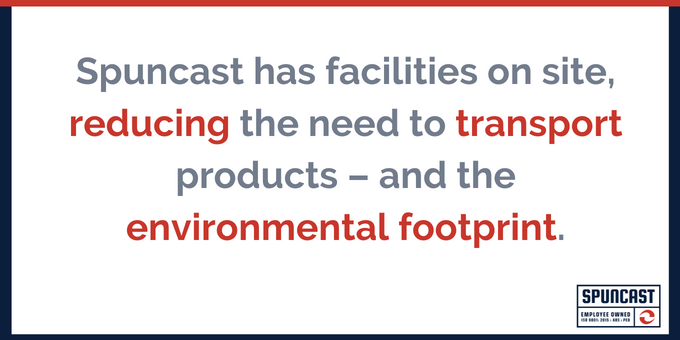
In addition, Spuncast has complete boring, cutting, machining, and testing facilities right on site, so there’s no need to transport products from one facility to another.
This cuts down on transportation, which a University of Georgia study found contributed 81% of the lead and one-third of the zinc discharged into the atmosphere over the process of metal mining and manufacturing.
The concept of buying an item made out of scrap metal doesn’t sound so bad now, does it?
The bottom line: Doing right, but keeping the market moving
We all want to do right by the environment; we understand the stakes. But we also need to keep the wheels of industry moving.
We believe there are ways to satisfy both needs, by providing environmentally prudent solutions to manufacturers’ most pressing problems.
Centrifugally cast products are one of those solutions.
Contact us if you’d like to know more.

